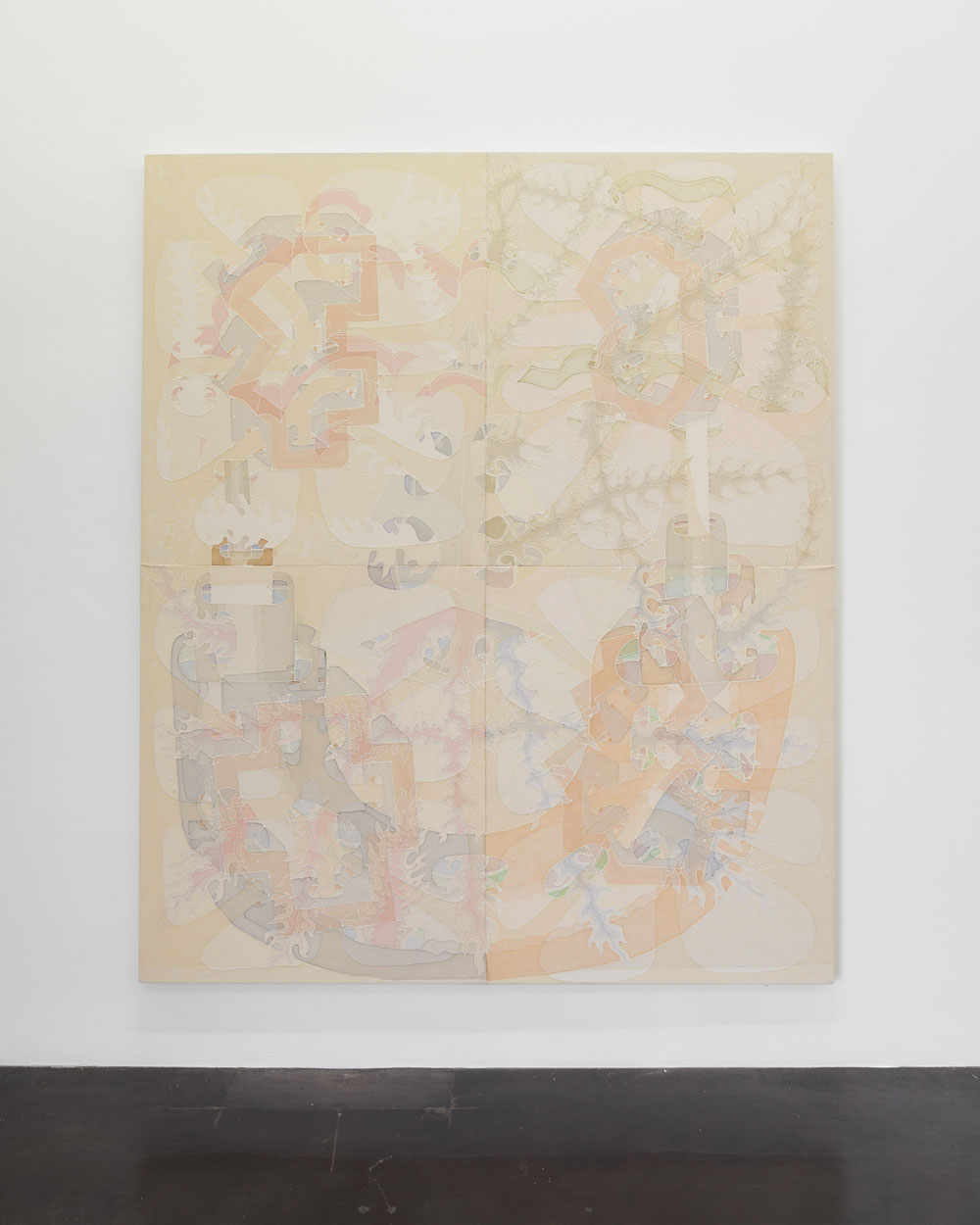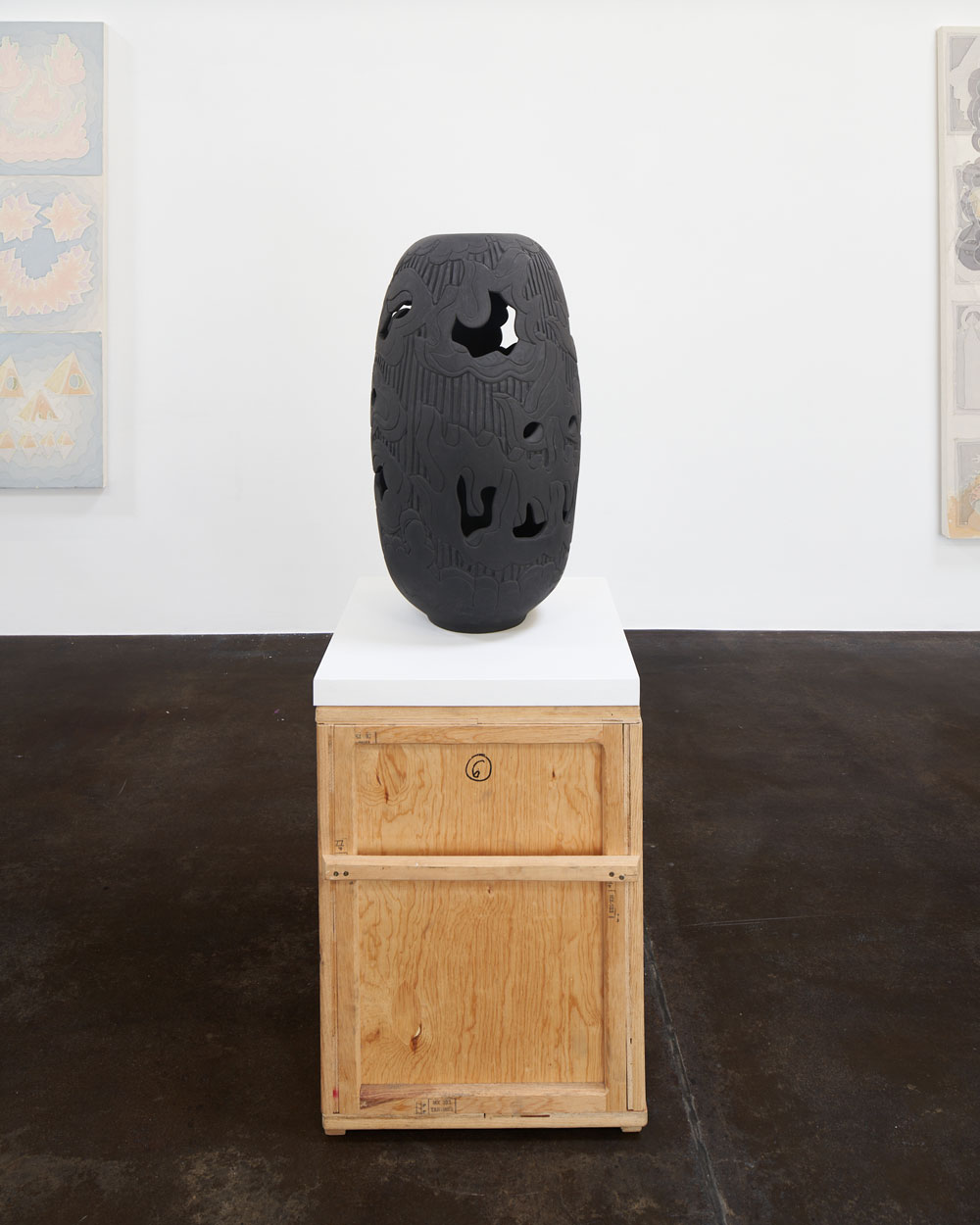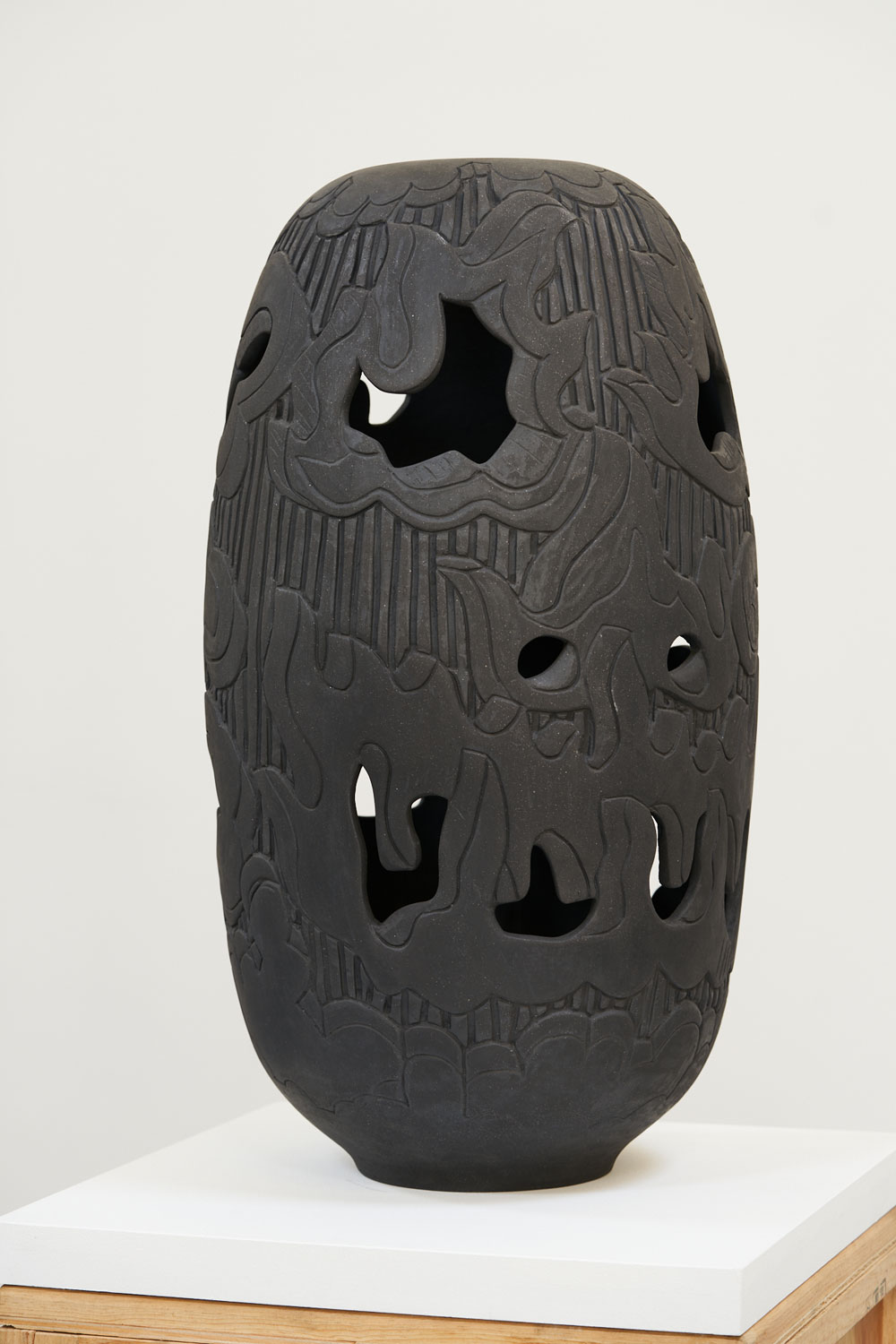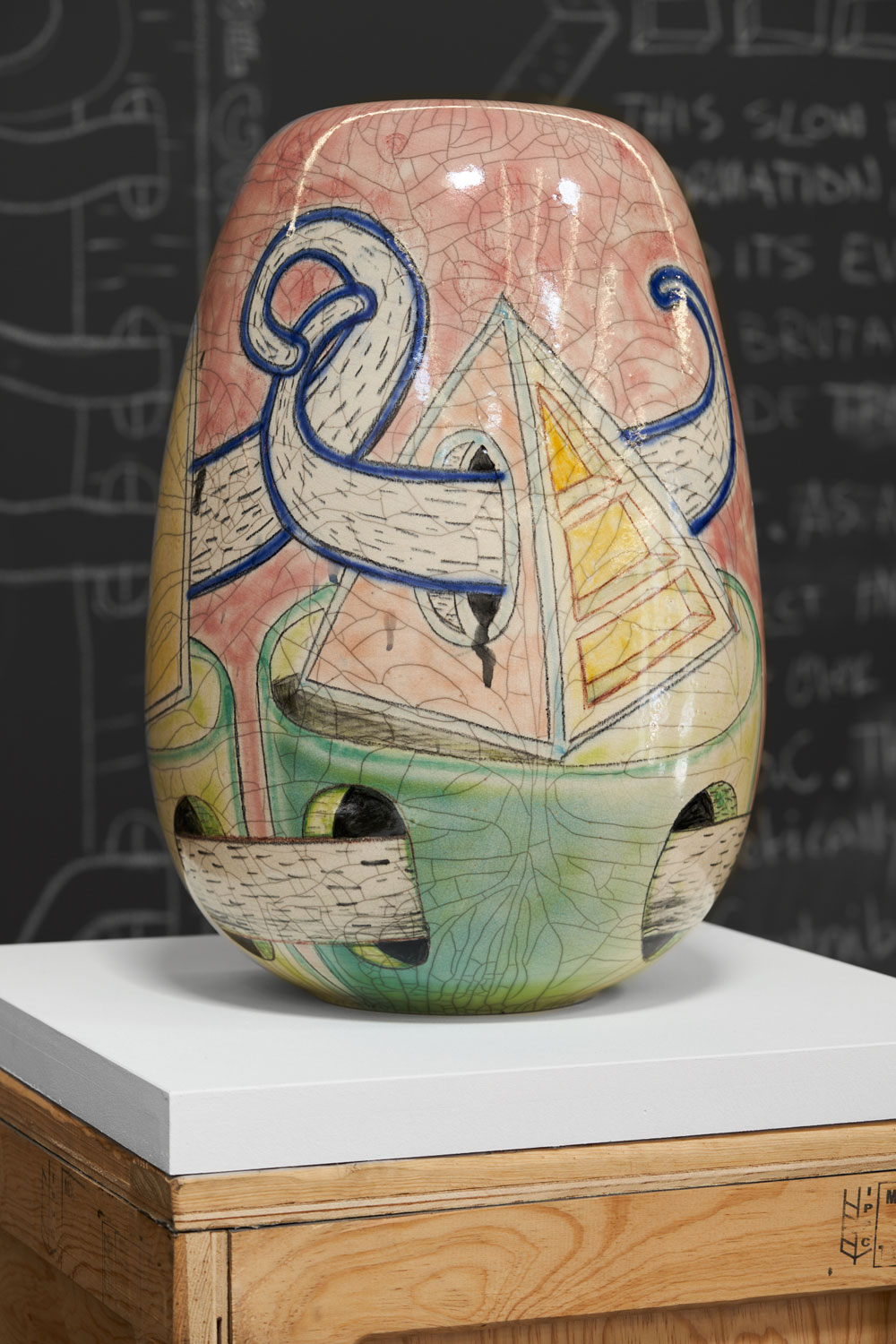
ZHIVAGO DUNCAN: Measuring Consciousness
September 15 - November 19, 2022
Artist Reception: Thursday, September 15, 6-8 PM
CULT Aimee Friberg is pleased to announce Measuring Consciousness, a solo exhibition of batik painting, ceramic and stone sculptures by Mexico City-based artist Zhivago Duncan. Incorporating scientific taxonomy with transcendental aesthetics, Duncan’s work combines old and new techniques to offer a meditation on the evolution of consciousness. The artist’s first solo exhibition with CULT, and first solo exhibition in the United States in over a decade, Measuring Consciousness will be on view from September 15 to November 19, 2022, with an opening reception on September 15 at 6 pm at CULT’s San Francisco space.
Duncan was born in Terre Haute, Indiana to a Syrian mother and a Danish father. His fluidity across materials and cultural signifiers reflects the relentlessness of an investigative mind. With freewheeling creativity spurred by his curiosity, Duncan’s lifelong impulse towards painting reflects his desire to contemplate, negotiate and comprehend the "big picture": the origins of sentient life and the universality of consciousness. The artist locates his obsession with creation myths to 2011, when his family’s plans to visit their homeland for the first time were disrupted by the outbreak of the ongoing Syrian Civil War. Investigating the region from afar, Duncan became absorbed by historical accounts of life in the Fertile Crescent, as well as the mythologies that arose from its earliest civilizations – still relevant for their psychic potency today.
Measuring Consciousness finds the artist returning to a technique he first learned as a 17-year-old – batik, or wax-resist dyeing. Like ceramics, batik is a decorative craft that evolved independently in civilizations around the globe. Laying down wax with a Tjanting (a pen-shaped tool used in batik to draw designs) directly onto his canvas allows Duncan to paint in a way that resembles drawing, before filling in fields of color in an intensive, layered process that defies the technical impulses of oil or acrylic. The dynamic results are both surreal and primordial; complex compositions play on forms reminiscent of petroglyphs. In his recent work, Duncan further heightens the dichotomy between ancient and modern by implying classification systems for his motifs. In the language of scientific phenotypes, the artist catalogs facial expressions, tectonic shapes and totemic symbols. What we are left with are endless variations on a theme, as perpetual and mutable as the universe itself.
As an artist and theorist, Duncan is far more interested in what aligns us than what divides—drawing connections to fundamental similarities between the Big Bang and the Biblical story of Genesis, or the Iliad and the Bhagavad Gita. The artist is fascinated by parallel developments in isolated societies, and identifies such synchronicities as indicative of the underpinnings of universal consciousness. As an artist, he treasures traditional techniques of coloring and figuration as pathways to a Promethean impulse – the fashioning of humanity from the raw materials of the Earth.
Utilizing negative space to render portals and entrances across his Raku ceramics, Duncan builds up a world of inner and outer spaces, passageways and avenues; the sculptures seem to embody their own world-within-worlds. This style and position of embeddedness is also found in Duncan’s stone sculptures. Referring to them as "digital fossils," they evoke a prehistoric version of the technologies we carry today in our pockets. Formed of cast or encrusted metals featuring imagery resembling Duncan’s batik works, the aluminum and steel plates exist by themselves and inserted with stone blocks of marble and other material. Encompassing, footnoting and expanding these individual works in one section of the exhibition is an installation of chalk on blackboard-esque wall. Much like a fantastic, scrolling mathematics equation of lore, the chalk installation spells out the connections and profundities of Duncan’s worldview.
The artist is interested in looking across vast gulfs of time to encounter the familiar and remember the eternal–a kind of universal solidarity that evaporates divisiveness. Gently disavowing an individualist ego, Duncan reminds us that we are all shared nodes in a vast network of knowledge–stretching across continents and through centuries, and closely intertwined with the seismic information of the planet and the stars.
Zhivago Duncan (b. 1980 in Terre Haute, Indiana) is a first-generation Syrian-American artist based in Mexico City. In his work, Duncan negotiates the disconnection between physical and metaphysical consciousness through a wide range of media including elaborate large-scale paintings, drawings, raku ceramic sculptures, kinetic dioramas and immersive installations. Inspired by the evolution of human consciousness and the construction of reality through culture, Zhivago’s artistic practice coalesces into a unique story of creation drawn from imagery found in ancient texts such as the Enuma Elis, the Popol Vuh, the Dogon and Lakota myths and the Bible. By weaving elements of ancient creation myths with texts on physics, metaphysics, astronomy, artificial intelligence and contemporary philosophy, Zhivago creates fantastical worlds and his own distinctive mythology that finds its fullest expression in his paintings. Duncan received his BFA from the Chelsea College of Art and Design in London and his work has been exhibited widely at Museo Jumex (Mexico City), Pioneer Works (Brooklyn, N.Y.), Saatchi Gallery (London), CULT Aimee Friberg (San Francisco), Fredric Snitzer Gallery (Berlin), Künstlerhaus Bethanien (Berlin) and the Museo de Arte Contemporáneo Querétaro (Querétaro City, Mexico), amongst others. His works are in the collections of the Perez Art Museum (Miami), the Saatchi Collection (London), the Barjeel Foundation (Sharjah, UAE), the Olbricht Collection (Berlin) and various private collections.











































